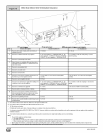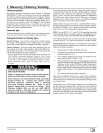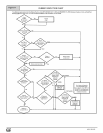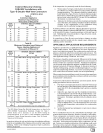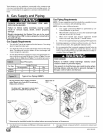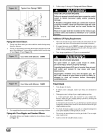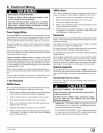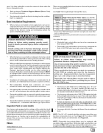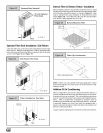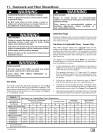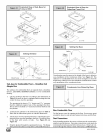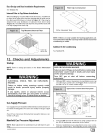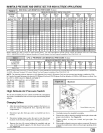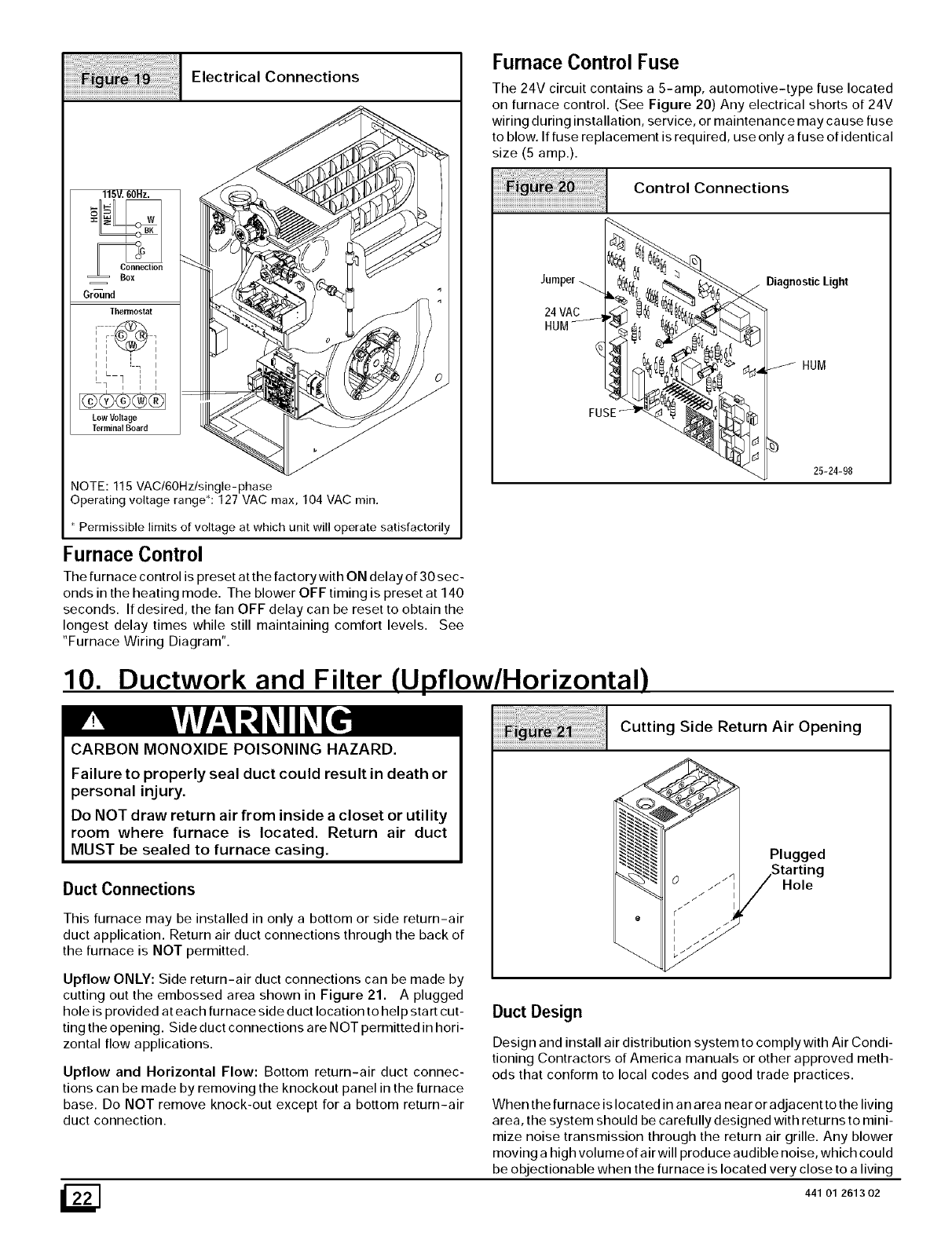
Electrical Connections
115V.60Hz.
Gr_nd
Thermostat
I ! , I
L ] _ _
Low Voltage
Terminal Board
NOTE: 115 VAC/6OHz/single-phase
Operating voltage range*: 127 VAC max, 104 VAC min.
* Permissible limits of voltage at which unit will operate satisfactorily
Furnace Control
The furnace control is preset at the factory with ON delay of 30 sec-
onds in the heating mode. The blower OFF timing is preset at 140
seconds. If desired, the fan OFF delay can be reset to obtain the
longest delay times while still maintaining comfort levels. See
"Furnace Wiring Diagram".
Furnace Control Fuse
The 24V circuit contains a 5-amp, automotive-type fuse located
on furnace control. (See Figure 20) Any electrical shorts of 24V
wiring during installation, service, or maintenance may cause fuse
to blow. If fuse replacement is required, use only a fuse of identical
size (5 amp.).
Control Connections
Jumper_>_/_ ___ _ DiagnosticLight
24v c4.
.0M
" _ _ _ 25-24-98
10. Ductwork and Filter (Upflow/Horizontal)
CARBON MONOXIDE POISONING HAZARD.
Failure to properly seal duct could result in death or
personal injury.
Do NOT draw return air from inside a closet or utility
room where furnace is located. Return air duct
MUST be sealed to furnace casing.
Duct Connections
This furnace may be installed in only a bottom or side return-air
duct application. Return air duct connections through the back of
the furnace is NOT permitted.
Cutting Side Return Air Opening
Plugged
,,Starting
0 /_/'I'I / Hole
I
Upflow ONLY: Side return-air duct connections can be made by
cutting out the embossed area shown in Figure 21. A plugged
hole is provided at each furnace side duct location to help start cut-
ting the opening. Side duct connections are NOT permitted in hori-
zontal flow applications.
Upflow and Horizontal Flow: Bottom return-air duct connec-
tions can be made by removing the knockout panel in the furnace
base. Do NOT remove knock-out except for a bottom return-air
duct connection.
Duct Design
Design and install air distribution system to comply with Air Condi-
tioning Contractors of America manuals or other approved meth-
ods that conform to local codes and good trade practices.
When the furnace is located in an area near or adjacent to the living
area, the system should be carefully designed with returns to mini-
mize noise transmission through the return air grille. Any blower
moving a high volume of air will produce audible noise, which could
be objectionable when the furnace is located very close to a living
_] 441 01 2613 02



